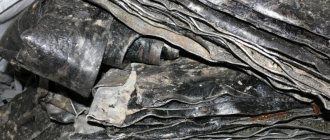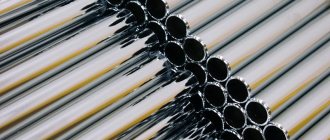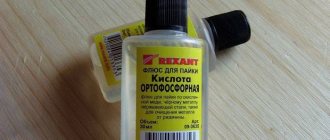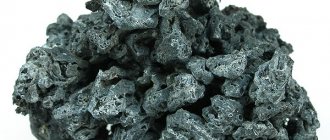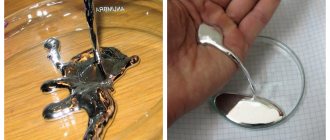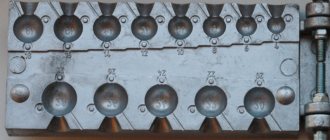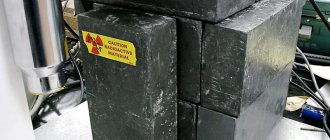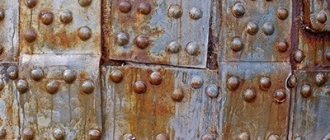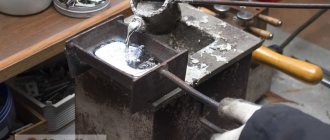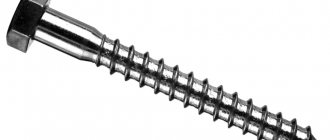The alloy of tin and lead has special parameters that allow it to be used in various branches of industrial production. The technical characteristics and physical properties of each metal determine their use for long-term storage of products, soldering and surface treatment of parts in order to increase their service life.
An alloy of tin and lead is used to give strength to manufactured parts.
Physical properties of lead
Lead, a waste product from silver processing, turned out to be a very useful metal in production.
Archaeological artifacts indicate that this chemical element was known to man more than 6,000 years ago. Its discovery is associated with the presence of metal in ores containing silver. When they were smelted, the material was thrown into waste, but over time they began to make various products from it: figurines, water pipes. Currently, lead is used:
- for the production of batteries;
- in the cable industry - to create a protective seamless sheath;
- for the manufacture of paints and solders;
- during the construction of protective structures - for sources of radiation pollution (sarcophagi);
- for the production of alloys based on it (babbitt);
- for the production of printing compositions;
- in medicine.
The main consumer of lead is the automotive industry, where babbits are widely used. The production of lead-acid starter batteries is constantly growing, and improvements are being made to developments.
In the chemical industry, the material is used to coat steel products: apparatus, tanks, pipelines. Since iron and lead do not combine with each other, a thin layer of molten tin is first applied to the products. This processing process is called tinning.
In production, not only pure lead is used, but also its compounds. For example, lead oxide is used in glass making. A slight addition of the compound to the material when melting glass makes it possible to give crystal products the transparency of a natural mineral - rock crystal.
Main lead producing countries
The lion's share of global lead production comes from the European Union, but it's worth noting that they get 60% of the metal from recycling rather than direct mining - a trend that is gaining popularity in other countries. The next 3 places are shared by the USA, Russia and China, with small gaps from each other. In the post-Soviet space, Ukraine and Kazakhstan traditionally demonstrate high levels of lead production. The latter also has one of the world's largest proven reserves of this metal.
Technical Parameters of Tin
Tin - from spoon to radiator
This chemical element has been known for more than 3,500 years and was originally intended for the manufacture of tableware. Modern consumption of tin is associated with the canning industry.
A patent for a method of storing food in tins belongs to a chef from France. Since 1810, humanity has been able to store food for a long time.
Tin is the main component of solders used for soldering and tinning of heat exchangers, radiators of automobile engines, and tinning of medical and food equipment.
The material is used for the production of tin bronze, which has excellent mechanical, casting, and anti-corrosion properties. Such alloys are used in parts intended for use in special conditions and under special loads.
An alloy with a low coefficient of friction is babbitt. It contains 83% tin, antimony and copper. It is used in the production of bearings. Thanks to the stable compound of antimony and copper, the alloy has high hardness.
The bearing operating mechanism and composition components eliminate the occurrence of mechanical damage on the surface of the part.
Tin has specific physical properties:
- Its deformation is accompanied by a sound generated as a result of shear under the influence of force.
- At temperatures of -39 °C and + 161 °C, tin turns into powder.
History knows cases of such transformations. Buttons made from pure material lost their shape in the cold, and the “tin plague” destroyed metal ingots.
The most important lead compounds and their applications
Lead, being a fusible heavy metal, has been used since ancient times to this day for the manufacture of ammunition, including for civilian purposes. Another feature of lead is its ability to absorb radiation, which has led to its widespread use in nuclear energy and medical technology. But much more extensive possibilities are opened up by various compounds of lead with other substances and metal alloys. Without them it is difficult to imagine any branch of human activity. The chemical industry and agriculture, military science and batteries, mechanical engineering and lithography, geology and much more - all these areas involve lead compounds.
Acceptance rules:
- Ingots and blocks of lead-antimony alloys are accepted in batches. The batch must consist of pigs or blocks of the same grade of alloy and be documented in one quality document. The quality document must contain:
- trademark or name and trademark of the manufacturer;
- product name and alloy grade;
- batch number and number of melts included in the batch; - mass (net) of the batch;
- results of chemical analysis of each melt; - date of manufacture (for alloys intended for long-term storage);
- designation of this standard.
- To control the compliance of the quality of lead-antimony alloys with the requirements of this standard, acceptance tests are carried out for compliance with chemical requirements. composition (see chemical composition).
- To control the weight and chemical composition, every thirtieth pig, but at least two pigs, or one block from a batch weighing up to 6 tons is selected. and every fiftieth pig or one block from a batch weighing over 6 tons. At the manufacturing plant, it is allowed to take samples from the liquid metal evenly at the beginning, middle and end of the smelting spill. The content of impurities of sodium, calcium, magnesium, bismuth, nickel, iron and arsenic is determined by the manufacturer at the request of the consumer.
- Each pig and block of lead-antimony alloys is subjected to surface quality control.
- If unsatisfactory test results for the chemical composition are obtained, repeated tests are carried out on a double sample taken from the same batch. The results of repeated tests apply to the entire batch.
Human exposure to lead
The most common culprit of heavy metal poisoning is lead. For a long time, lead additives were used to lead gasoline, which led to severe air pollution in large cities. Today, the use of lead to increase the octane number of fuel is prohibited almost throughout the world (in the Russian Federation - since 2002). Other possible sources of poisoning:
- industrial emissions;
- agricultural products contaminated with heavy metals;
- household items containing lead;
- work in hazardous industries.
Once in the body, lead has a strong toxic effect. Metal poisoning in childhood is especially dangerous. Lead intoxication in a child leads to delays in physical and mental development, and cognitive impairment can manifest itself throughout subsequent life. In adults, constant contact with lead or regular inhalation of its vapor causes chronic poisoning, impairs brain function and significantly increases the likelihood of serious diseases, including cancer.
Color marking for supplies of lead-antimony alloys
- Ingots and blocks of lead-antimony alloys are marked at the end with paint:
- SSu - one blue stripe;
- SSuM - one white stripe;
- SSuMT - one black stripe;
- Lead-antimony alloys in ingots are transported in packages or in containers according to regulatory and technical documentation. The blocks are transported without packaging. The weight of the package is no more than 1500 kg. Packages of flat ingots and ingots of interlocking shape must be tied with steel packaging tape, stretched and fastened into a lock with clamping machines. The lock is located on the top side of the package. The upper free end of the tape in the belt is cut off at the lock at a right angle. The length of the lower curved end of the tape should not exceed 70 mm from the lock. Tape thickness is 0.9-1.00 mm, tensile strength is not less than 340 (35) N/mm2 according to GOST 3560. It is allowed to use steel wire with a diameter of 5.00 to 10.00 mm according to GOST 3282. Placement and fastening of packages in transport vehicles is carried out in accordance with the rules of cargo transportation in force for this type of transport. The device for securing packages in covered cars must comply with GOST 22477.
- Transportation of packages - in accordance with GOST 21399. Lead-antimony alloys in blocks and containers are transported by all types of transport, except aviation, in accordance with the cargo transportation rules in force for this type of transport. By rail, packages are transported in covered wagons by carload; blocks and containers are transported by open rolling stock in accordance with the requirements of GOST 22235. The placement and securing of cargo transported by rail must comply with the technical conditions for loading and securing cargo approved by the USSR Ministry of Railways.
- Lead-antimony alloys are stored under a canopy or in open areas (concrete, with wooden flooring, on pallets, etc.). During storage, the quality of lead-antimony alloys does not change.
Each package must indicate: the number of ingots in the package and the handling sign “Do not take with hooks.” By agreement between the manufacturer and the consumer, when forming ingots into bags, it is allowed to apply color markings only to one ingot in the top row of the bag. It is allowed to apply waterproof digital markings by hand on the top surface of the bag. Transport marking - in accordance with GOST 14192. Transport marking of lead-antimony alloys intended for export is carried out in accordance with GOST 14192 and the requirements of foreign trade organizations.
Its use in construction
Metal is rarely used in construction work: its toxicity limits its range of applications. However, the substance is used in alloys or in the construction of special structures. And the first thing we'll talk about is lead roofing.
Roof
Lead has been used as a roofing material since time immemorial. In Ancient Rus', churches and bell towers were covered with lead sheet, since its color was perfect for this purpose. The metal is plastic, which makes it possible to obtain sheets of almost any thickness, and, most importantly, shape. When covering non-standard architectural elements or constructing complex cornices, lead sheet is simply ideal, so it is used constantly.
Rolled lead is produced for roofing, usually in rolls. In addition to sheets with a standard flat surface, there is also a wavy material - pleated, painted, tinned and even self-adhesive on one side.
In air, the lead sheet quickly becomes covered with a patina consisting of a layer of oxide and carbonates. Patina protects the metal from corrosion. But if for some reason you don’t like its appearance, the roofing material can be coated with a special patination oil. This is done manually or in production conditions.
Sound absorption
Soundproofing a home is one of the enduring problems of old and many modern houses. There are many reasons for this: the structure itself, where walls or ceilings conduct sound, the material of floors and walls that does not absorb sound, innovation in the form of a new elevator design, which is not provided for by the design and creates additional vibration and many other factors. But in the end, the apartment dweller is forced to cope with these problems on his own.
At an enterprise, in a recording studio, or in a stadium building, this problem takes on much larger dimensions, and is solved in the same way - by installing sound-absorbing finishes.
Lead, oddly enough, is used precisely in this role - as a sound absorber. The design of the material is almost the same. A lead plate of small thickness - 0.2-0.4 mm - is covered with a protective polymer layer, since the metal is still classified as dangerous, and organic material is fixed on both sides of the plate - foam rubber, polyethylene, polypropylene. The sound insulator absorbs not only sound, but vibration.
The mechanism is as follows: a sound wave, passing through the first polymer layer, loses some of the energy and excites vibrations of the lead plate. Part of the energy is absorbed by the metal, and the remainder is extinguished in the second foam layer.
It is worth noting that the direction of the wave in this case does not matter.
This video will tell you how lead is used in construction and farming:
X-ray rooms
X-ray radiation is extremely widely used in medicine, essentially forming the basis for instrumental examination. But if in minimal doses it does not pose any particular danger, then receiving a large dose of radiation poses a threat to life.
When setting up an X-ray room, it is lead that is used as a protective layer:
- walls and doors;
- floor and ceiling;
- mobile partitions;
- personal protective equipment - aprons, shoulder pads, gloves and other items with lead inserts.
Protection is provided thanks to a certain thickness of the shielding material, which requires accurate calculations taking into account the size of the room, the power of the equipment, the intensity of use, and so on. The ability of a material to reduce radiation is measured in “lead equivalent” - the thickness of a layer of pure lead that is capable of absorbing the calculated radiation. Protection that exceeds the specified value by ¼ mm is considered effective.
X-ray rooms are cleaned in a special way: timely removal of lead dust is important here, since the latter is dangerous.
Other directions
- One of the most extraordinary uses of metal is the construction of earthquake-resistant foundations and the sealing of masonry joints. Metal has been used in this way since ancient times, but even today this method of imparting vibration resistance to a structure is not outdated.
- Paints containing lead and lead compounds are not used in residential premises. However, they perfectly protect steel and iron from corrosion, so they continue to be used on technical structures: bridges, railway supports, frame structures, and so on.
- Lead-based stabilizers are used in the manufacture of metal-plastic profiles, from which, in turn, windows and doors of various types are made. Leading companies, in light of the trend of abandonment in favor of lead-free technologies, are introducing into production a profile in the production of which lead is not used. However, most manufacturers have not yet abandoned this technology.
Lead is a heavy, malleable, corrosion-resistant metal, and most importantly: accessible and fairly cheap to produce. In addition, metal is indispensable for protection against radiation. So a complete cessation of its use is a matter of a rather distant future.
Elena Malysheva will talk about health problems caused by lead use in the video below:
Test methods:
- Selection and preparation of samples of lead-antimony alloys for chemical analysis is carried out in accordance with GOST 24231.
- A sample of liquid metal is cast in the form of rods with a diameter of 7-10 mm and a length of 70-100 mm. The mass of the combined sample must be at least 1 kg. It is allowed to cast a sample of liquid metal in the form of a disk with a diameter of 42-66 mm and a thickness of 14-16 mm or a cylinder with a diameter of 38-42 mm and a thickness of 35-40 mm.
- Determination of the chemical composition of lead-antimony alloys is carried out according to GOST 1293.0 - GOST 1293.14, GOST 13348. It is permissible to use other methods for determining the chemical composition that are not inferior in accuracy to those specified in the standard. If disagreements arise in determining the chemical composition of lead-antimony alloys, the determination is carried out according to GOST 1293.0 - GOST 1293.14, GOST 13348.
- The surface quality of ingots and blocks of lead-antimony alloys is checked by external inspection without the use of magnifying means.
